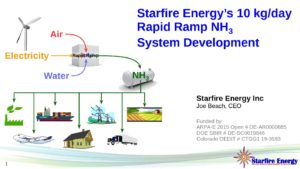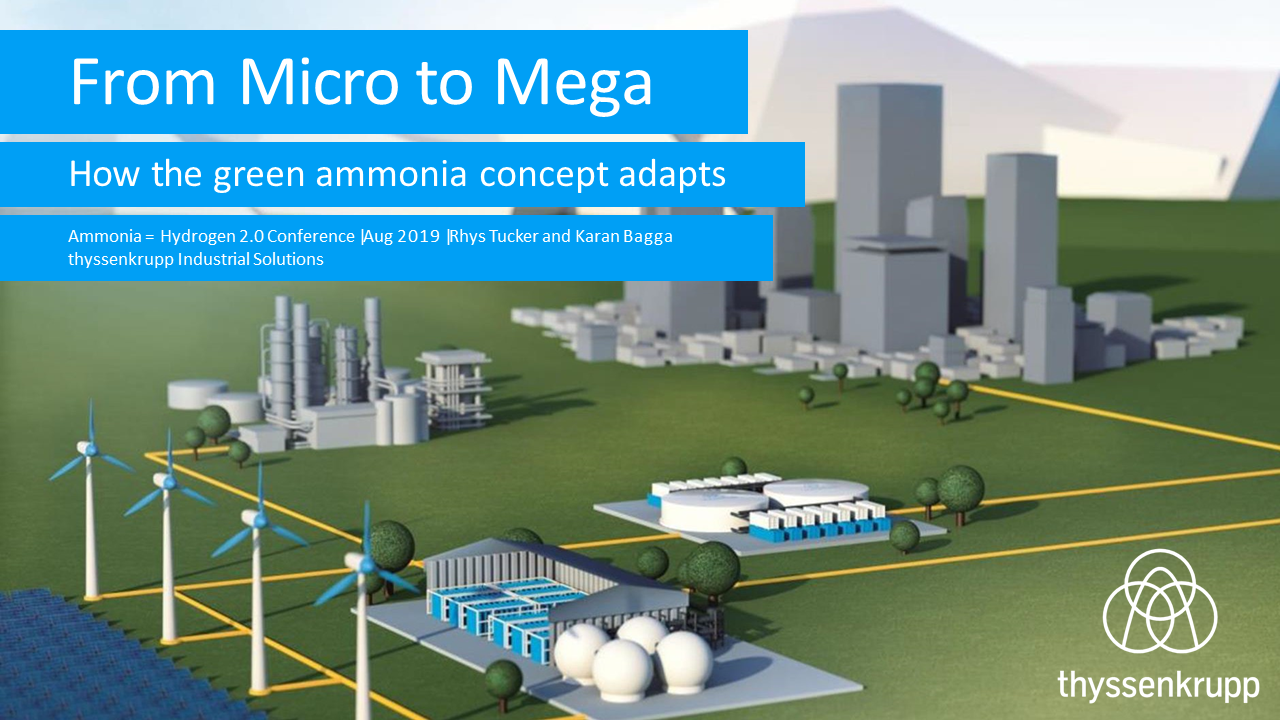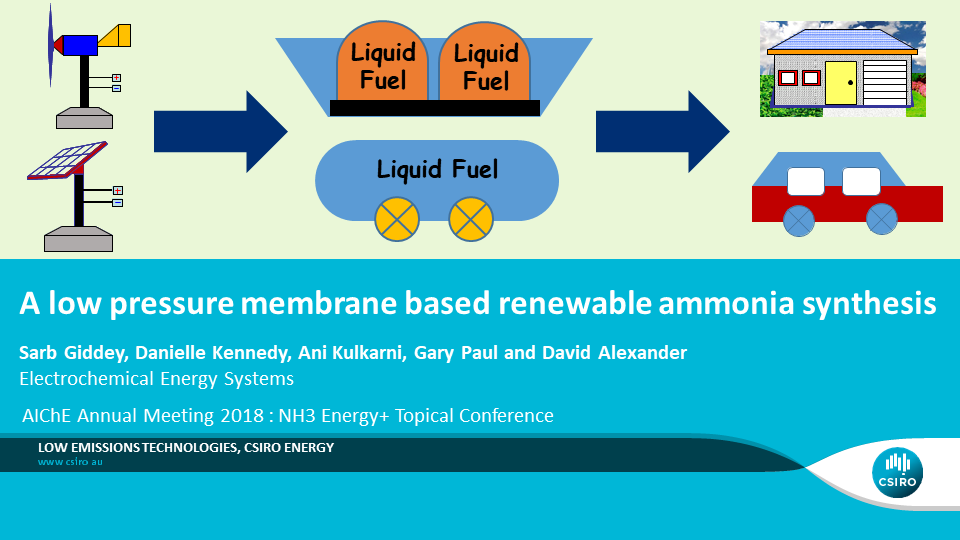Presentation
Starfire Energy's 10 Kg/Day Rapid Ramp NH3 System Development
Starfire Energy is building a 10 kg/day NH3 synthesis system using its low pressure Rapid Ramp NH3 process. The system includes hydrogen production by proton exchange membrane electrolyzer, nitrogen production by pressure swing adsorption, NH3 synthesis, and liquid NH3 storage. The tight coupling of the hydrogen, nitrogen, and NH3 processes require minimal reactant buffering. The system design, status, and preliminary performance will be discussed.









